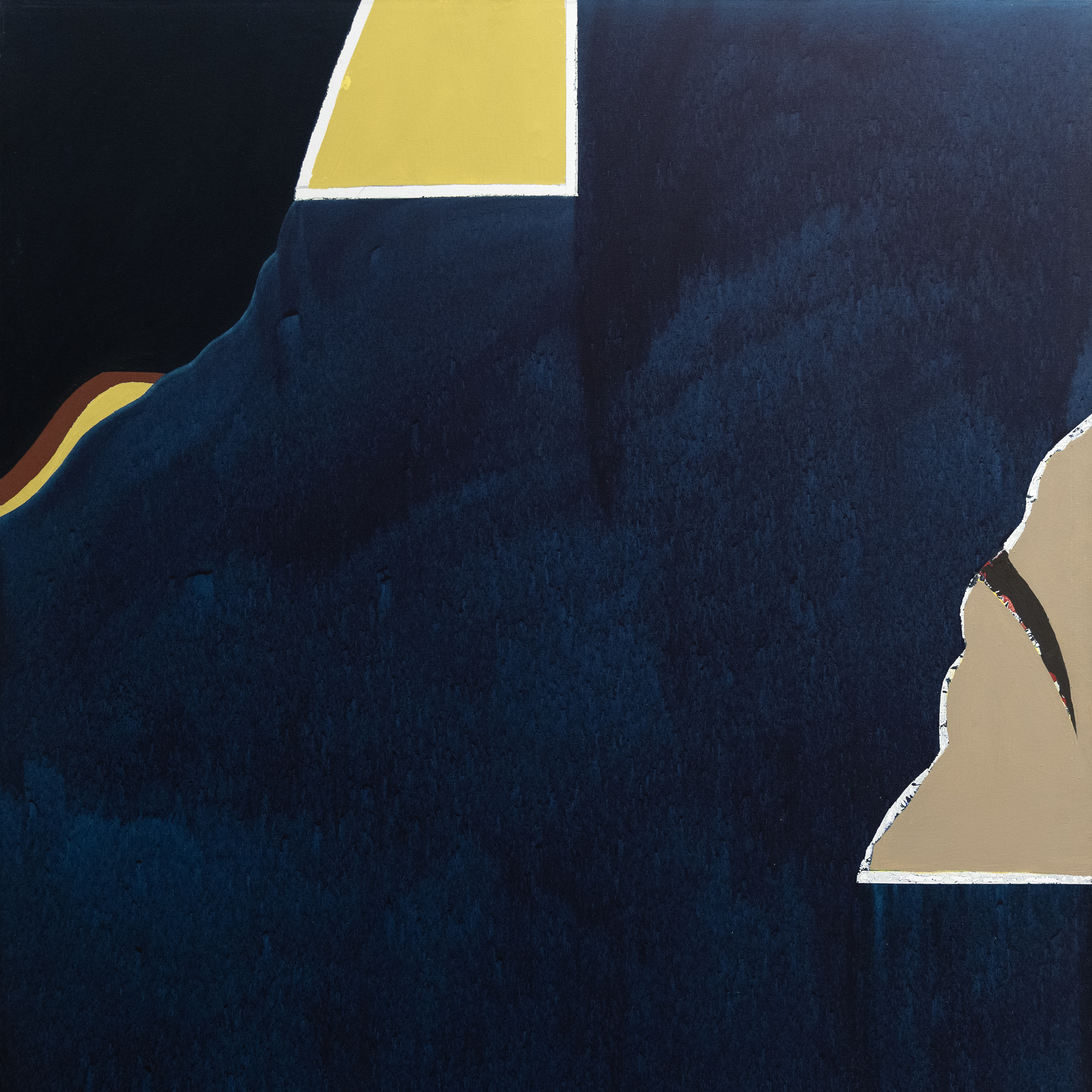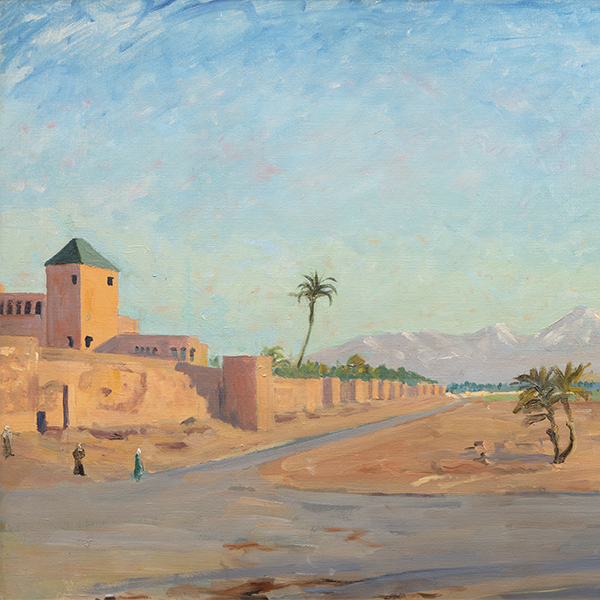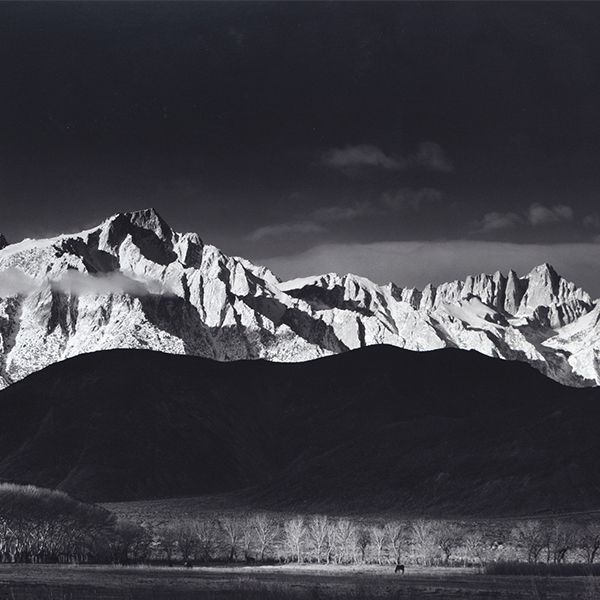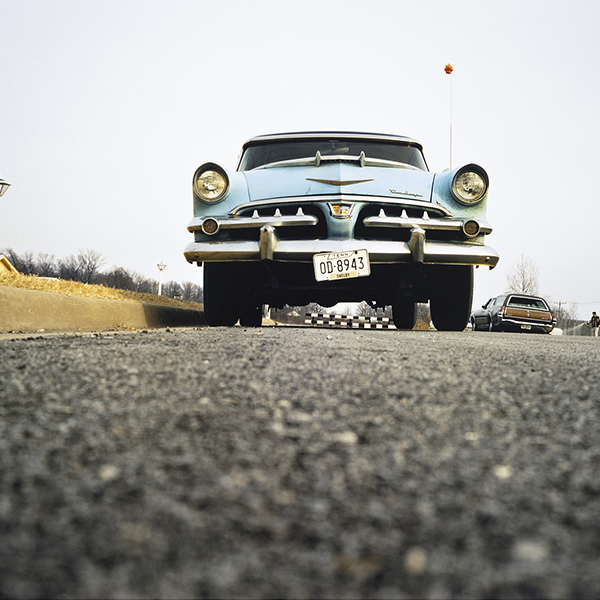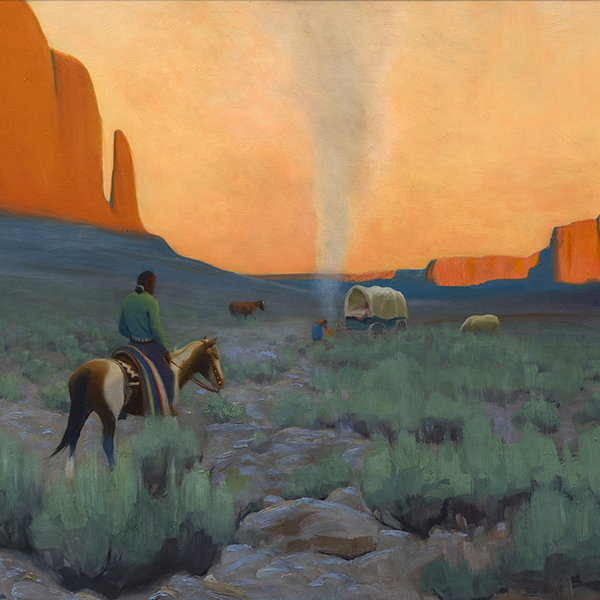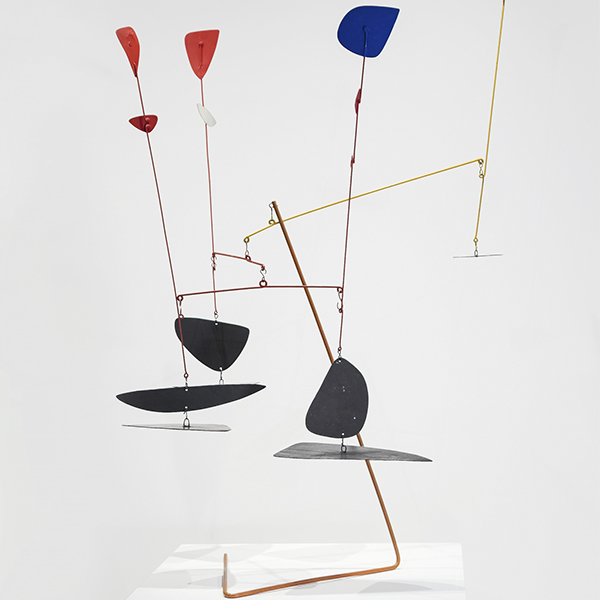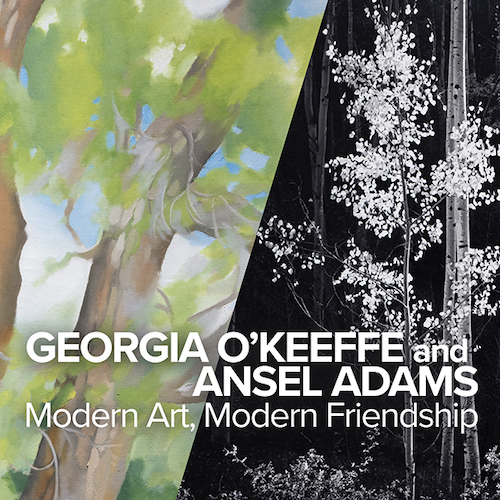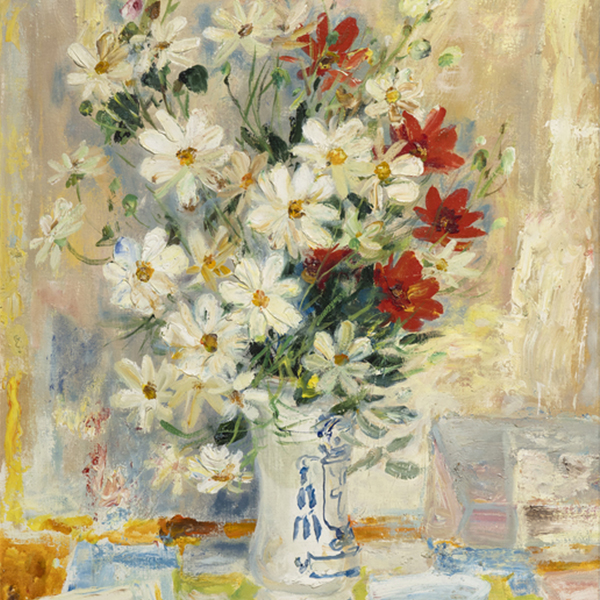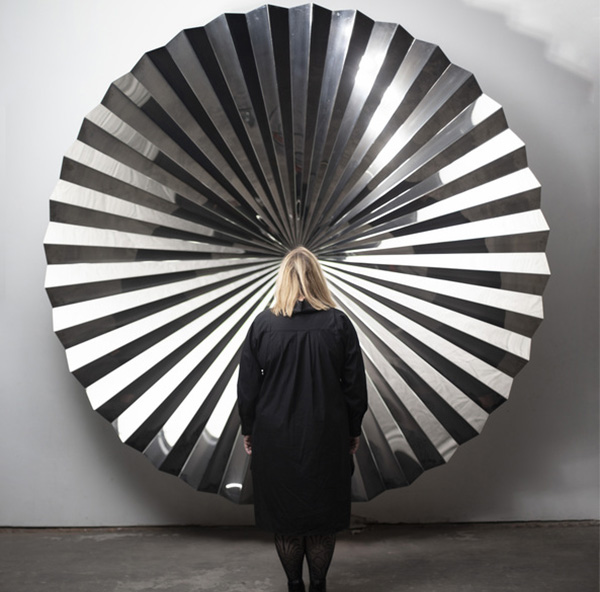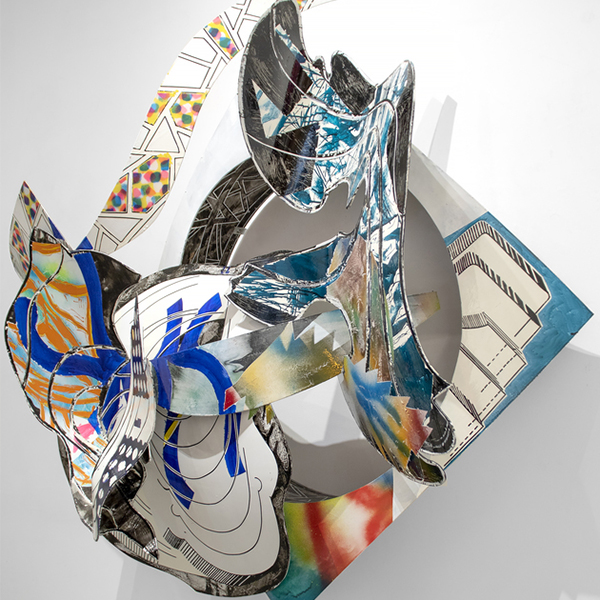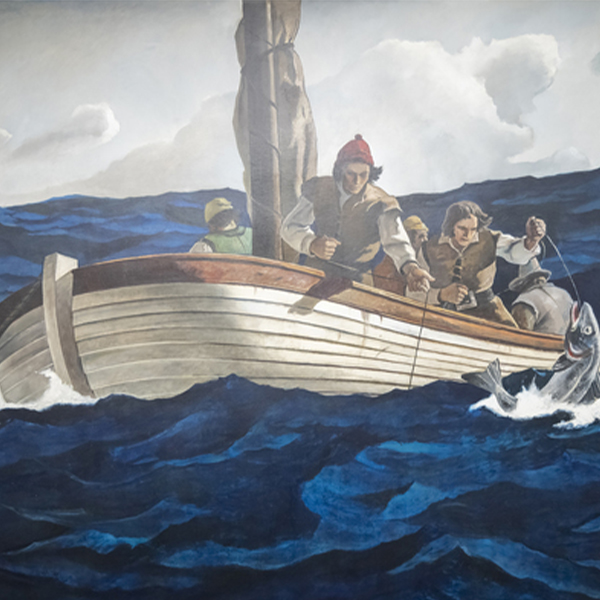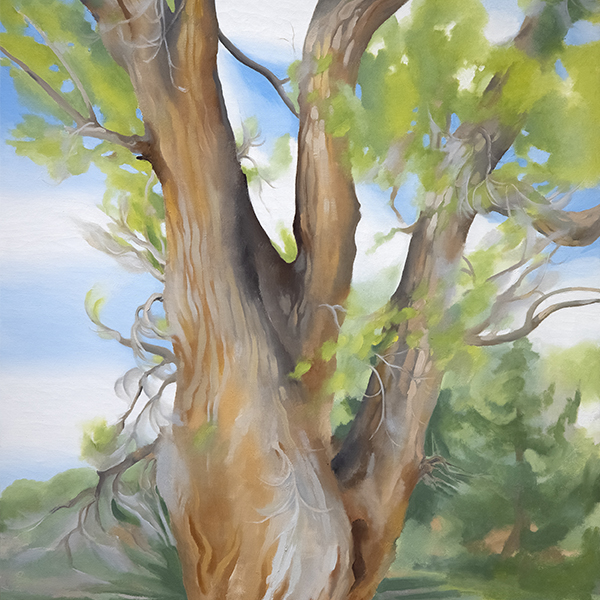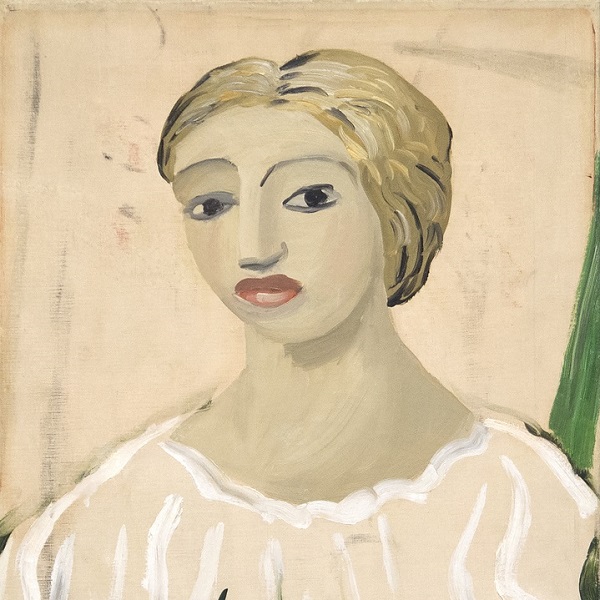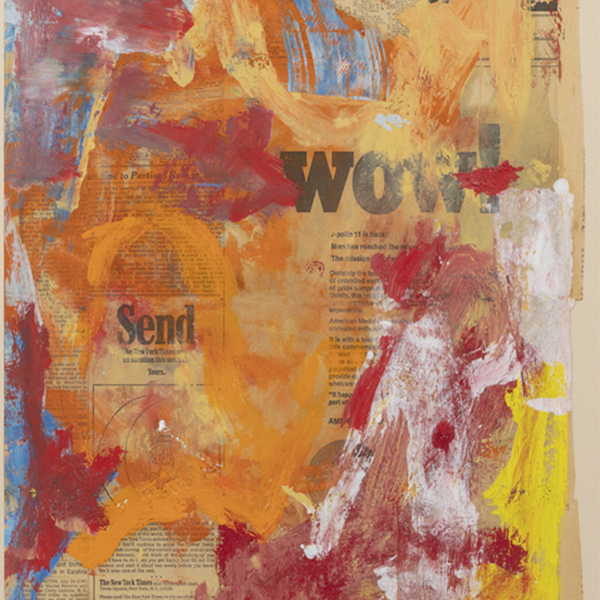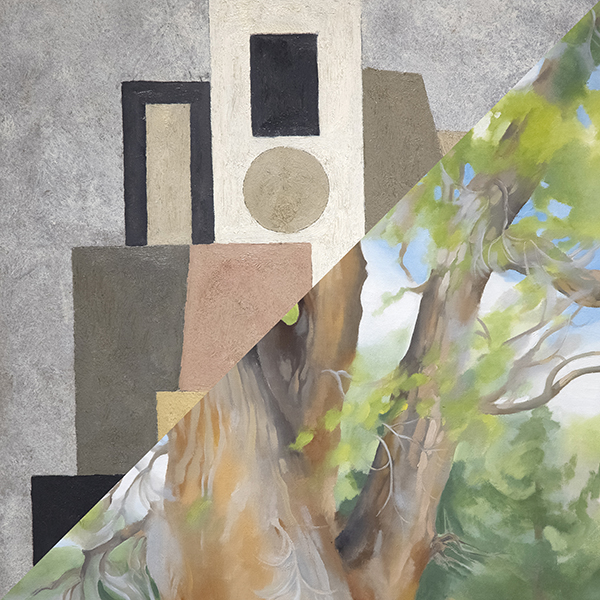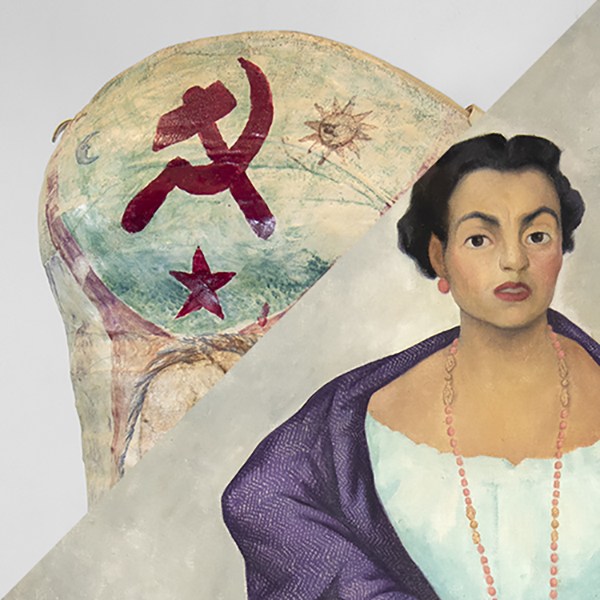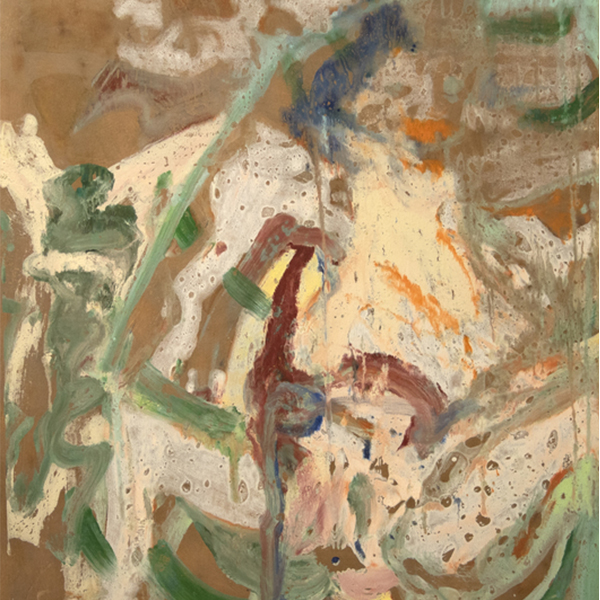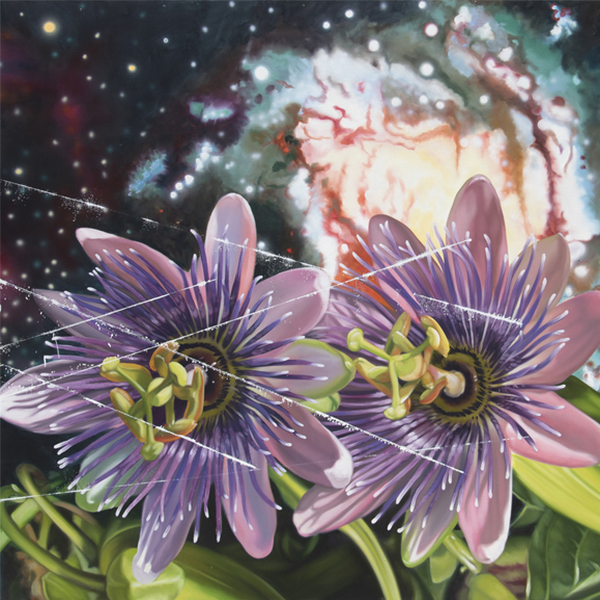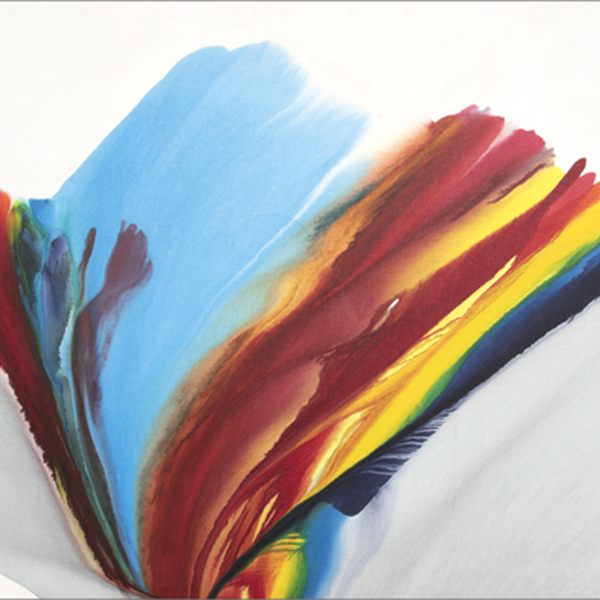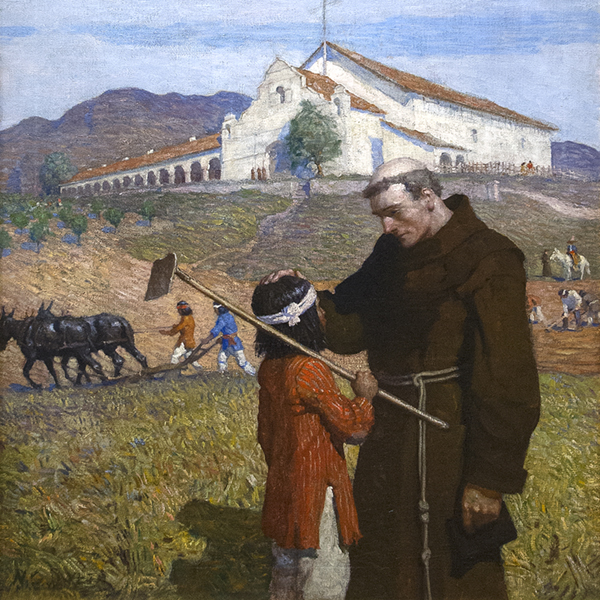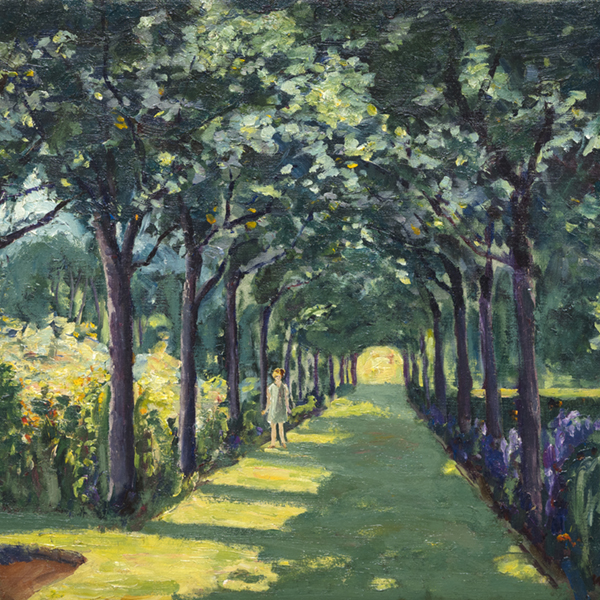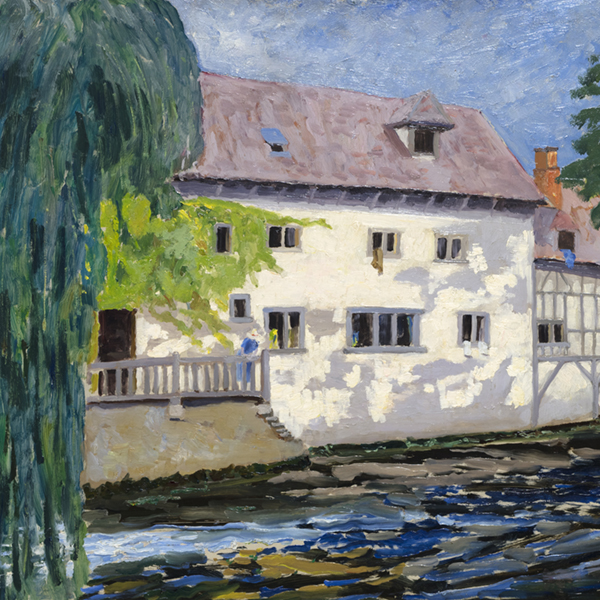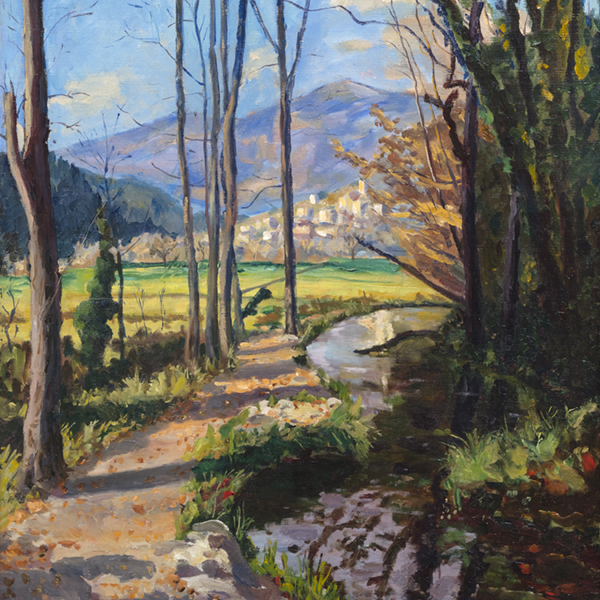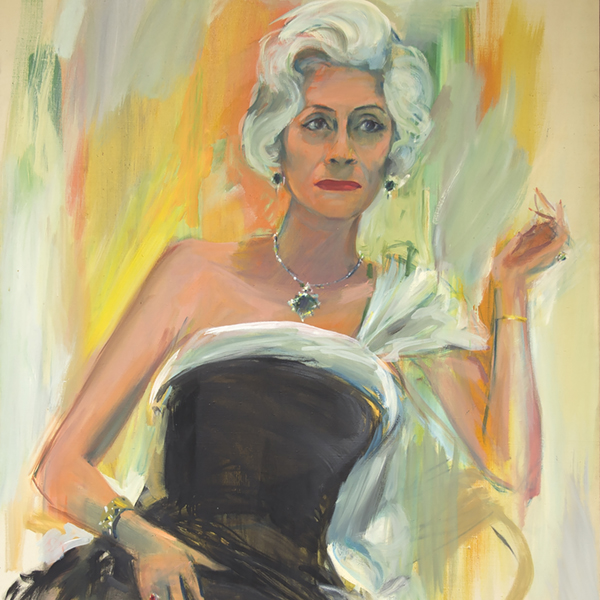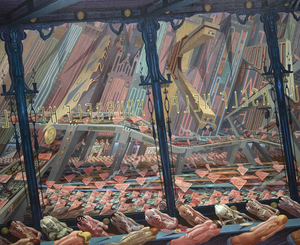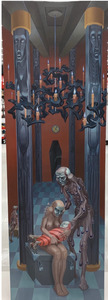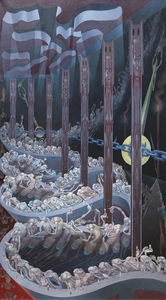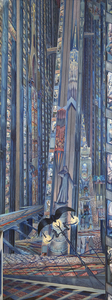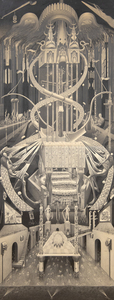That Irving Norman refers to this morbid architectural colossus as a palace underscores his sardonic intentions. Encased in steel girded shielding, its edifice has the tooth of a farrier’s rasp and a network of spikes, barbs, and skewers. It has the appearance of a prison as much as a fortress. Ominous and macabre it is built upon a foundation of peonage and servitude, human misery and debasement — a grim reminder of societal dereliction, corruption and greed. As usual, the tragic figures of Norman’s vision are as he noted, ‘distorted figures, connected to their environment so that the space they occupy determines their distortion, usually because of their confinement.’ Crammed into cubicles and crannies, they are reduced to a most ghastly circumstance, trapped and imprisoned, yoked and enslaved, aware of almost nothing except Dante’s warning posted above the entrance to such a place: “abandon all hope, ye who enter here.”
Irving Norman was cagey if not uncooperative when asked to reveal the source material for his off-putting and perplexing visual allegories. Not surprisingly, he looked to Dante Alighieri and one of civilization’s most enchanting creations — A Divine Comedyfor inspiration and ideas. Sympathetic with Dante’s contempt for the way power warps morality, Norman welcomed the opportunity to express in twentieth century terms a fourteenth century genius’ for describing a journey through Hell, the underworld and beyond. Dante shared with Irving Norman a degree of frustration and resentment towards the political system of his time. He had been accused of opposing the Pope, stripped of all property, and condemned to be burnt at the stake if captured. As much as the Divine Comedy envisions the ultimate salvation of the soul, for Dante (as it does Norman) it served another purpose — critical commentary on the sociopolitical problems and the human condition that plagued his time.
Interpret this painting with a view to Inferno, the hellish first realm of Divine Comedy, and Norman’s so-called palace correlates well enough with the poet’s despotic structure of nine concentric circles of immoral sins stacked upon one another. Likely, Norman has paid homage to Dante’s vision by including the poet’s guide Virgil, as well as the love of his life, Beatrice, in the boat as observers, not participants. High above them, a dictator’s balcony and a corpulent power monger whose power thrives and is fed and augmented on the fears and suffering of those he has bent to his will. Not to be entirely morose, Norman has included some delightful touches. Notice, for example ghoulish little putti manning the tiller and boat motor. Also, the outermost eave panels that depict painterly abstractions; one in the manner of a Jackson Pollock drip painting, another, a non-objective cubist derivation. They are sly references to demonstrate what Norman called, ‘the relationship between art and the state of society” and are stationed on the same level, and next to scenes of abject debauchery.
The truth is, there is simply no artist quite like Irving Norman. His story is one of uncommon skill, a man of great humility who translated his war experience and social insights into impactful allegories of unforgettable, often visceral imagery. For decades, he worked in solitude with relentless forbearance and in a veritable vacuum without fame or financial security and outside prevailing trends. He looked to the past, was acutely aware of present trends, and given the human predicament knew he was forecasting the future. As time passed, and the unwieldy stacks of paintings grew ever larger, Norman came to know he was painting for future generations, and not his own; a knowing that the human condition was an essentially unchanged. As one New York Times reviewer mused in 2008, “In light of current circumstances, Mr. Norman’s dystopian vision may strike some…as eerily pertinent,” an observation that recalls more recent events.



